A Specter of Gender-Based Violence Looms Over Namibia
Poverty and high rates of unemployment contribute to brutality against women in this southwestern African country. In April, more than 200 Namibians marched in the capital city of Windhoek to protest rape culture and gender-based violence. (Martha Mukaiwa)
In April, more than 200 Namibians marched in the capital city of Windhoek to protest rape culture and gender-based violence. (Martha Mukaiwa)
Writer Martha Mukaiwa—using a narrative nonfiction, or literary journalism, approach—explores a heartbreaking problem in her home country, Namibia.
In Windhoek, Namibia’s capital city, Magdalena Stoffels Bridge isn’t a tourist attraction.
Photographing it draws attention from watchers faceless behind the fence of a modest house nearby. Halting their conversation, tugging at memory and prompting heated discussion that recalls a young girl’s rape and murder in the riverbed in 2010 before the pedestrian bridge was built.

“I always felt a certain way when I crossed that bridge,” says Jozika Kangumine, a young woman who used to hurry over it on her way to school in 2017.
The bridge was built in 2015 to reduce rape, theft, drug use and other crimes that make the city’s overgrown riverbeds notorious, but Kangumine still feels uneasy. “The energy is just off. It feels like there’s an unhappy soul. Someone had to die for this (bridge) to finally be built. It shouldn’t cost someone’s life.”
The blood cost was settled by Magdalena Stoffels, a 17-year-old whose body was found in the bed of the Arebbusch River, sparking a public outcry that sent 3,000 Namibians into Windhoek’s streets. The protesters were decrying the country’s high rate of gender-based violence—90% of which is perpetrated by men against women—and rising violence against children.
Nine years later, the bridge is a site of heavy foot traffic. Schoolgoers, workers and dawdling teens traverse a tombstone erected to prevent future crimes in the deep riverbed, and, like Kangumine, many Namibians remain haunted.
There are only 2.6 million people in this nation on the Atlantic coast of southwest Africa, but gender-based violence is widespread nonetheless. After the gruesome murder of 9-year-old Avihe Cheryl Ujaha, whose mutilated body was discovered in the Windhoek township of Katutura last August, Namibian Prime Minister Saara Kuugongelwa-Amadhila announced that police received 107,403 reports of gender-based violence between 2014 and July 2018.
Chief Inspector Catherine Walaula of the Namibian Police Gender-Based Violence Protection Unit reported that 438 cases were logged from Jan. 1 to Feb. 28 this year.
A nascent #MeToo movement is organizing—and amplifying—protests against these crimes, but core causes for the violence remain in place. Although Namibia has a high rate of income overall compared with other African countries, it has one of the world’s highest levels of income inequality. It is also plagued with high rates of poverty and unemployment, both recognized causes of gender-based violence. While the most common crimes are domestic violence and rape, gender-based violence in the country also includes “passion killings”—a local and responsibility-absolving term for intimate-partner crimes. As an example, 48 women were murdered by their husbands or boyfriends during the particularly grim year 2015.
The killings occur in a tinderbox of economics and toxic, outdated thinking, says Alna Dall, a steering member of the Namibia Coalition Against Gender-Based and Sexual Violence.
The country’s unemployment rate, which topped 33% in 2018, is the second highest in Africa (behind Congo). “Many men (are) unemployed,” Dall says. “Being unable to look after their families, they feel that they are no longer men. Perpetrating gender-based violence against a loved one is often an easy way of feeling empowered again. (Also,) men with traditional mindsets of gender are jealous of women who lift themselves through education. These men feel disempowered and act out in fits of envious rage.
“The causes of gender-based violence are very complex, but I do believe that poverty, homelessness, landlessness and modernity act as breeding grounds for this type of violence.”
Whatever the particular cause, the horror continues, splashed across headlines and appearing sporadically on protest posters. Stark, black-and-white placards held aloft by Namibian women, activists and human rights advocates who railed and marched, rallied and cried as they read the names of the dead outside the Katutura Police Station in Windhoek during a demonstration in 2018.
This year, too, Namibians remember some recent victims.
Monalisa Xoagus killed by her boyfriend on International Women’s Day and the four women murdered by their significant others during February’s macabre month of love:
25-year-old Felisia Ndamonoghenda Petrus strangled.
39-year-old Patricia Hochobes stabbed to death with scissors.
22-year-old Kalumbu Ndapandula Magano murdered by a single gunshot to the chest.
22-year-old Helao Gideon Hamuteta stabbed to death.
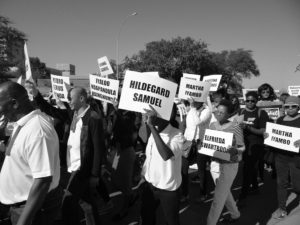
Namibians have their pick of other ghosts as well.
Many remember 24-year-old Alina Kakehongo, executed in July 2018 by her ex-boyfriend, a police officer who delivered a single gunshot to her head before turning the gun on himself.
The day before he barged into her place of work, Kakehongo had initiated a charge of assault.
Police inspector Christiana Simaho, presiding over dockets piled high in a dim room, shakes her head. At the Gender-Based Violence Protection Unit at Katutura Intermediate Hospital in Windhoek, she regularly deals with reports similar to the one filed by Kakehongo.
Beyond the green hall outside Simaho’s office, seven victims of gender-based violence sit with their kin, averting their eyes as they wait to see an investigating officer or social worker—seven more cases to add to the 200 reported in the first 31 days of 2019.
The victims meet with a doctor, who usually makes his way to the unit’s neat medical consulting rooms after hours of tending to higher-priority hospital patients.
Some victims then seek protection orders, which are law enforcement mandates that threaten abusers with two years’ imprisonment or a fine of $562 (U.S. dollars) should they attempt to contact their victims.
As the victims wait for the orders, expectantly, Simaho admits that documents provide little more than false hope.
“A protection order is just a piece of paper,” she says. “You can apply for the protection order, the protection order can be granted, and while having the protection order, still you can be killed.”
After 25 years of witnessing gruesome crime scenes and protesting the bail of countless accused murderers, abusers and rapists, Simaho suggests the first step toward a solution to what many consider to be a national crisis. “We have to change the laws,” she says. “If somebody has been arrested for a very serious case like murder, like rape, I don’t think that person (should) be granted bail until the case has been finalized—but that case must at least be finalized within a year.”
Simaho believes Namibia needs stiffer sentencing and a quicker turnaround for gender-based violence cases such as rape.
In the first three months of 2019, 258 rape cases were reported across the country, with 119 of the victims under the age of 18. In 2018, the reported number of rape cases was 1,121, and 500 victims were under 18. The true number of rape cases is thought to be considerably higher than what is reported.
Currently, according to Simaho, cases involving rape and other gender-based violence may drag on for up to four years.
“This is one of the things that discourage people from opening cases,” she says, her eyes flashing at the reality of a seemingly endless process, lost dockets and continuous trauma.
According to the police inspector, the details of the trauma are resurrected for rape and assault survivors who may testify long after their ordeal. “People are testifying sometimes two years after the event,” she says. “After the case has been finalized, they should come for counseling because, after testifying, those things will come back again.”
And sometimes the memories never leave. Instead taking dark, immovable residence in the victim’s psyche, feeding off a culture of silence, denial, victim blaming and shame.
Pearl Amuthenu (a pseudonym) is a 31-year-old Windhoeker who can still remember the ice cold of her brother’s hands when he first pulled down her tiny pajama pants.
She was just 7 years old and afraid of the dark. Amuthenu’s mother had sent her brother into her room to allay her phobia, not knowing he would become the cause of fear.
“Pearl, remember, don’t tell Mum,” her brother would say after raping her on vacation, during swimming lessons and in the bed she began to wet.
“I felt like it was my fault. That something must have been wrong with me for him to touch me like that.”
Then one day: “Pearl, does he touch you too?” The question uttered by her best friend was stunning.
“That night we walked together toward the kitchen, my best friend holding my hand tight,” Amuthenu says. “My mother was busy preparing dinner. My heart was beating so fast I couldn’t breathe, but my best friend courageously spoke for both of us saying, ‘Aunt Elise, John has been touching us.’ ”
That evening she heard her mother crying and yelling, and the next week her brother was sent away.
“My family pretended as if it never happened, so I also pretended that it never happened,” Amuthenu says. “I didn’t realize that, 20 years later, I would have a mental breakdown because of trying to suppress this traumatic event. I didn’t understand why my body was shutting down and why I kept reliving this event until I sought out help.”
Today, Amuthenu doesn’t let her children go to sleepovers and doesn’t allow other people around them. She’s on antidepressants. She doesn’t trust men. She struggles to have intercourse with her husband and is seeing a therapist.
Years later, her brother would serve a prison term for murder.
A sentence for murder, yes. But not for the frequent violation of a minor who would grow up to confront him via text message and receive no acknowledgment of the incidents.
Amuthenu is not alone. Not in being raped by a family member or enduring the silence around her trauma.
“I first got sexually molested and raped when I was just 2 months old,” says Ndina Erastus (a pseudonym).
“I have no recollection of this incident, but my mom told me this before she passed on. She said she left me at home with my uncle while she went to buy my food. When she returned, she couldn’t understand why I was crying so hysterically and why the end of my dress was covered with blood. She undressed me just to find blood and Vaseline on my private parts.”
A medical professional confirmed that she had been raped, and her uncle disappeared.
That was the first attack on Erastus. The second time, she was 6 and raped at knifepoint by her neighbor’s father. Then when she was 17, two men raped Erastus in her bedroom; one was a tenant in the building where her family lived.
“I kept telling them to get the hell out, but it’s like I was talking to zombies. They pinned me down. I couldn’t even scream or shout. I felt numb and paralyzed. They did the most unimaginable, disgusting things to me.”
Erastus told a friend, and together they went to the police. “But we were chased out of the police station because we apparently looked like street kids.”
Erastus then told her older sister, who told her mother.
“But all (my mom and sister) said is that the guys should buy me a fridge, a closet [a cupboard] and give me money. … Not that I cared, because all I wanted was for them to go to jail,” says Erastus, who believes this rape was the beginning of many personal problems including a sexually transmitted infection and eventually ovarian cancer.
Erastus used to go to therapy but stopped because she could no longer afford it. “I have come to a point where I believe that my purpose in life is for my body to be used however people want to use it,” she says. “I’ve developed a bad lying habit. I always wanna paint this fairy-tale picture because I feel people might see my inner scars. All this has made me not want to be a mother ever.”
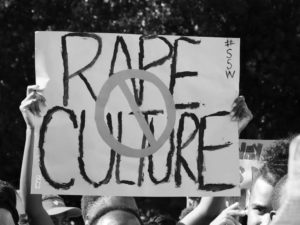
A new surge of outrage against gender-based crimes in Namibia began in the spring of this year. On April 6, the first Slut Shame Walk took place to protest the prevalence of rape culture, including the myth that what women wear is a cause or justification for sexual assault. Gathering in the center of Windhoek, approximately 200 Namibians marched down Independence Avenue holding placards with rallying cries such as “My body, my choice,” “It’s a look, not consent,” “No one asked what my rapist wore” and “Protect queer black women.”
Nsozi Mwazi, one of the organizers of the walk, says the message was loud and clear: “People should now act, think and reflect about the rape culture in Namibia. Our social media has been buzzing nonstop since the walk with different comments—some positive, some negative—which creates the platform for discussion and awareness.”
About a month after the event—and after hundreds of Namibians shared harrowing stories of sexual harassment and assault on social media—#MeToo Namibia was born. Many credit the walk as the catalyst. Monica Geingos, Namibia’s first lady, tweeted: “ … and with no further ado, @slutshamewalk has started the Namibian #MeToo. Please follow them, their work is invaluable.”
#MeToo Namibia’s twitter account describes the movement as “an alliance of institutional partners and individual activists whose aim is to end rape culture in Namibia; by breaking the silence, shaming and blaming of survivors.”
As the movement gains momentum, increasing numbers of Namibian women are beginning to name and shame their sexual abusers. During two weeks in May, 200 survivors reported cases of sexual violence to the Namibian Women’s Lawyers Association (NWLA), a #MeToo Namibia alliance member.
The NWLA and other alliance members offer free legal services to rape survivors, and other groups offer psychosocial support.
In addition to encouraging rape survivors to speak out, #MeToo Namibia aids survivors of domestic violence. Police inspector Simaho says intimate-partner—or domestic violence—charges are often withdrawn because of economic reasons.
“That particular perpetrator, the one who is the abuser, may be the breadwinner, and the dependency is not only financial, but everything depends on this person,” she says. “So if this person is to be arrested, what will happen to (the victim)?”
Ultimately, some victims may end up in the morgue. Each one a headline, a salacious story, a ghost left to roam the minds of Namibians such as Esther Beukes—a young Namibian filmmaker who read about a wave of gruesome “passion killings” in 2014 and took to Facebook to post four dystopian words.
“Stay single, stay alive.”
As apt as Beukes’ sentiments may feel, inspector Simaho has hope.
“We are arresting every day. We are charging every day. They are sentencing every day, and we are going to testify every day.”
It’s noble work, but the police inspector’s voice seems to catch on the words that underscore the sheer scope of Namibia’s crisis.
“Every day.” “Every day.” “Every day” “Every day.”
And, as the bodies continue to pile up in the wake of fatal domestic violence, as the headlines bleed and we’re haunted by our ghosts, it can be difficult to envision a world beyond this. The Namibia that Erastus imagines in which we’ve changed how we raise and socialize our boys. The country Amuthenu foresees after far more women stop protecting perpetrators and start calling them out so, in her words, “the next generation knows that when they speak their voices will not be ignored.”
It’s what Namibian women are fighting for through petitions, protests, community building, educational programs in the schools and recommendations issued to government ministries and the police.
As #MeToo Namibia gives survivors courage and release from blame, we wait for an updated national plan of action on gender-based violence. For functional safe houses, stiffer sentencing, effective protection orders and our daughters to get home from school. Many by taxi, some by bus, others by walking over the Magdalena Stoffels Bridge.
Your support is crucial…With an uncertain future and a new administration casting doubt on press freedoms, the danger is clear: The truth is at risk.
Now is the time to give. Your tax-deductible support allows us to dig deeper, delivering fearless investigative reporting and analysis that exposes what’s really happening — without compromise.
Stand with our courageous journalists. Donate today to protect a free press, uphold democracy and unearth untold stories.

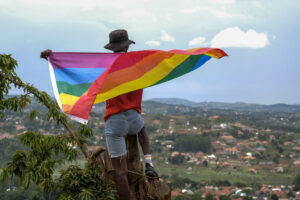
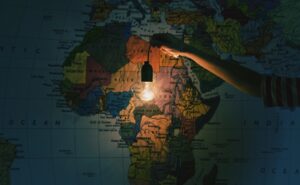

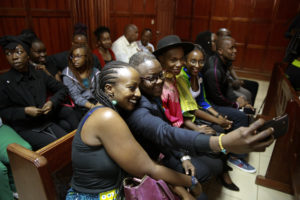

You need to be a supporter to comment.
There are currently no responses to this article.
Be the first to respond.